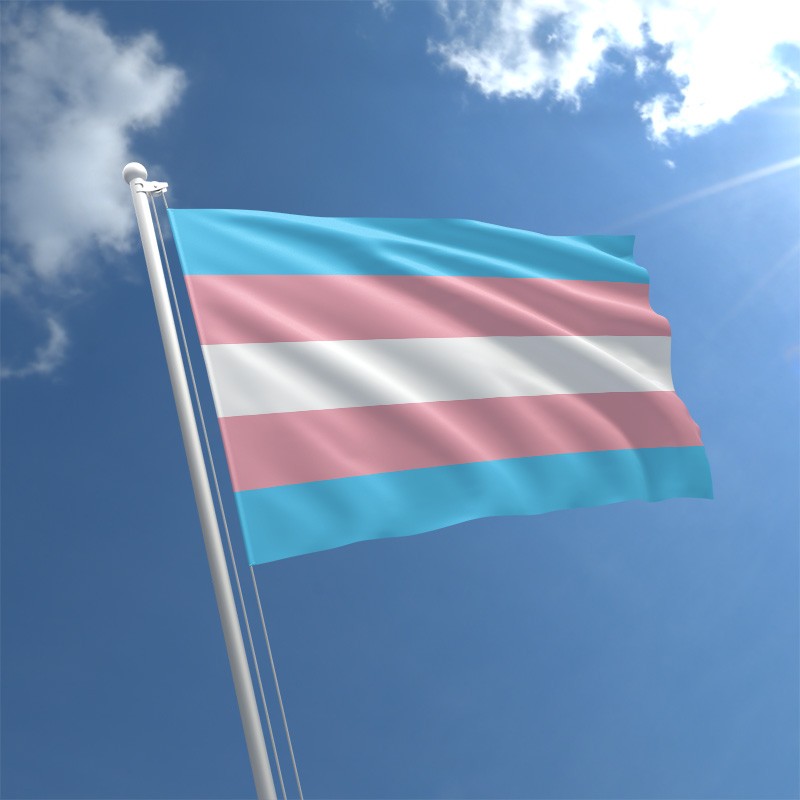You, Your Wedding, and Trans-Gender and Non-Binary Inclusivity
 Over my longish
career as a Marriage Celebrant I’ve married
more than one Trans person. In every case it
all started with a very tentative email or
phone conversation during which the person
enquiring tentatively broached the subject
while asking whether the ceremony could be a
legal one. In each case my answer was
simple and to the point. You can be
legally married to a person whose gender on
their paperwork is the opposite one to that
on yours. Despite all the rhetoric, it is
what’s on the paperwork that counts, not
what’s in your pants. (These
conversations took place before
Australia changed those three words in the
Marriage Act – a man and a woman - to
two people.) The marriages went ahead.
In each case a very happy ceremony, some with
open acknowledgement of the trans journey,
some without.
Over my longish
career as a Marriage Celebrant I’ve married
more than one Trans person. In every case it
all started with a very tentative email or
phone conversation during which the person
enquiring tentatively broached the subject
while asking whether the ceremony could be a
legal one. In each case my answer was
simple and to the point. You can be
legally married to a person whose gender on
their paperwork is the opposite one to that
on yours. Despite all the rhetoric, it is
what’s on the paperwork that counts, not
what’s in your pants. (These
conversations took place before
Australia changed those three words in the
Marriage Act – a man and a woman - to
two people.) The marriages went ahead.
In each case a very happy ceremony, some with
open acknowledgement of the trans journey,
some without.So I was very surprised when,
after the December 2017 change to the Marriage
Act, gender, which had never featured on any
of the marriage paperwork other than the
gendered terms Bridegroom and Bride, was
suddenly front and centre on the Notice of
Intended Marriage and on the Official
Certificate. Particularly
as my new driver’s licence had arrived
without any gender designation, something
which is happening in various states in
Australia, and there is ongoing discussion
about removing gender from birth
certificates.
If
you’re a Cis-Gender couple planning your own
wedding, issues of gender identity may not be in
the forefront of your mind. However there are good
reasons why they should be.Let’s hark back a little to the days when a couple could legally marry only if they were of opposite genders. What that meant was that, however inclusive the ceremony (and I worked hard to make sure that everyone felt included), there was a point in it where the celebrant had to make a statement that, in effect, said to some of the guests, “except you”. So I offered a range of options for ways the couple could make it clear to the guests that this was not their opinion, but a legal requirement. So we made statements to that effect.
Since the change in the Act many of my couples (both gay and straight) are opting to include a statement about what the change in the Act, and the change in the wording of the celebrant statement, means to them.
But, as they say, there is more, because there is so much around a wedding that can make a trans or gender nonconforming person feel unwelcome and embarrass them.
Here is how to factor inclusivity into every part of your wedding.
- Watch your pronouns in all wedding-related communications. By the time wedding rolls round, having seen pronouns shared in your save the dates, invitations, wedding and website, hearing them used in your ceremony and on your seating plan, place-cards, and speeches, will not be remarkable. There is nothing more awkward than making someone feel uncomfortable through being misgendered, resulting in them having to decide whether to identify as “other” by correcting this, or to be silent and feel invalidated.
- Brief all your wedding suppliers in advance. If necessary, do a little training about sharing pronouns and acceptable terms. Make sure your celebrant is aware of your desire to be inclusive. You may have to specifically pay attention to the wording of the Welcome or invitation to congratulate you does not include terms like Ladies and Gentlemen. (I use Friends and Loved Ones, or just Everyone). Ask your photographer to give directions without using gendered terms. This applies not just for the group photos, but for photos of the wedding party where you have mixed genders. Something like everyone holding a bouquet, over here please. Anyone who is wearing trousers please check that you don’t have anything bulky in your pockets. Ask your florist to put people’s names on bouquets, corsages, and boutonnieres, rather than gendered terms like bridesmaid and groomsman. And make sure that your DJ understands that calls for girls/ladies or boys/gents (or any similar terms) to the dance floor, won’t be acceptable. (You could even write all of the above into your contract with these vendors).
- Before booking a venue, check the toilets at the venue (and ceremony site if separate). Are there gender neutral toilets available? If not, ask if you can put signs over the existing signs that specify whether the toilets have urinals or only stalls with pedestal toilets. While many trans people use the toilet that aligns with their gender identity, others, including non-binary guests, can feel unsafe using one that is specifically labeled for a particular gender.
- Talk to the venue about bar practices. Where your trans or non-binary guests look young, they will be asked to provide ID to prove they are old enough to be served alcohol. This is a legal requirement and venues can be fined large amounts if found to be serving alcohol to underage people. However, while the process is in place to remove gender markers from driver licences, for example, bar staff should be reminded that having a M or an F on a licence that doesn’t seem to match the gender identity of the person in front of them doesn’t mean that there is anything questionable going on.
- Be mindful of attitudes when planning who sits where. If you have any inkling of a concern about the attitude of any your guests, make sure that you do not seat them at the same table(s) as your trans or non gender-conforming guests. Your wedding isn’t the place for an all-out educational dust-up. Everyone present should be able to relax and enjoy themselves, and feel safe and accepted while doing so. Should anything untoward happen, despite your best plans, make sure that you have someone briefed who can damp it down and, if necessary, quietly frog-march the offending bigot off the premises.
- Skip gendered traditions. Personally, I’m in favour of tossing out any tradition that confirms old-fashioned gender-role stereotypes. Most of these reinforce gender roles of the marrying couple, but there are two that impose on everyone present – tossing the bouquet, and tossing the garter. These require people choosing whether they should line up to catch the bouquet or the garter, which totally excludes anyone who is non-binary and will invariably raise the spectre of the potential of others not believing a trans person belongs on that side.
Related posts
- Getting married when you don't identify with a gender
- You CAN have a
wedding free of gender-role stereotypes
- 'You may kiss your bride'
- Same Sex Ceremonies - Negotiating the Gendered Nature of Ceremony Traditions
Thanks for reading!
